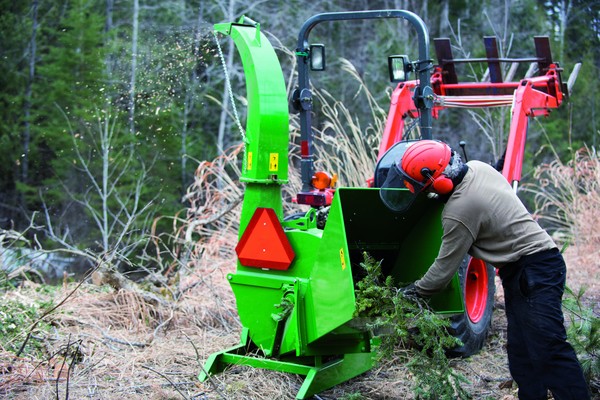
Machinery and plant for making compost
The biochemical process for the production of an organic substance using vegetable residues is complicated and requires care for the well defined phases and precise parameters. Compost is the end product of the organic digestion process made possible with the use of machinery and plant. Compost can be used by hobbyists or for the needs of industry capable of managing the process during all its phases
In these years of economic and social crises the circular economy increasingly comes up, a full-circle economic system which eliminates waste or reduces it. Making compost is a form of recycling biological materials which are reintegrated into the biosphere rather than winding up in the dump or incinerator. It is produced through the aerobic decomposition of microorganisms which work on a heterogeneous substrate to trigger, other than a reduction in volume, deep transformations in the physical structure of the chemical and nutritional contents to make the product into a stable compost. Depending on the type of substrate and its temperature and humidity, the process takes months. As regards machinery and equipment for plant types, these range from those for hobbyists to those for industry.
Process phases
The process for making compost begins with emissions of water, calories, NH3 and CO2 to reach the production of a humidified organic product partially mineralized and no longer susceptible to biological transformation. Two phases are defined, aerobiotic digestion and the maturation and finishing phase.
The initial mesophilic phase is decomposition carried out under moderate temperatures by mesophilic microorganisms. As the temperature rises, a second, thermophilic phase starts, in which the decomposition is carried out by various thermophilic bacteria under high temperatures reaching 70°C. These temperatures deactivate seeds and weeds which might be present and kill thermophilic microorganisms pathogenic for plants and humans. Finally, as the supply of high-energy compounds declines, the temperature starts to decrease, and the mesophiles responsible for humidifying once again predominate in the maturation phase.
The factors influencing the process can be named a aeration, temperature and the humidity of the substrate along with the its nature and composition. The need for oxygen is greatest in the decomposition phase and the best condition for this is when the concentration of atmospheric oxygen reaches around 10% in the substrate. At this point, aeration is important. For the temperatures, they must reach 65°C for the work of the thermophilic microorganisms. A good water content is between 55% and 60% and must not fall below 40% or exceed 65%. As for aeration, humidifying must be controlled. The porous structure of the substrate conditions aeration and thus the microbiotic activity. The same applies for the composition in that when the flora microbiotic is multiplying and transforming, a quantity of C20 is consumed at a rate three time greater than nitrogen. This means it is important to maintain the C/N ratio of the substrate between 20/l and 30/l. Depending on whether the compost process is for hobbyists or industry, as stated above, there are differences not only in the materials used but also in the machines, equipment and plant required for the transformation process.
When there are green components in the substrate, grass, leaves, vegetable wastes and the like, a number of conditions apply. In detail, if dealing with residues arriving directly from farming or gardening, the compost can be used with no need for authorization so long as it is used for the same activities, compatible with the needs of the crop species grown. In other cases, making compost with green wastes must be authorized.
Machinery and equipment for making hobbyist compost
The materials usually used are lawnmowing cuttings, tree and brush pruning residues, fallen leaves, vegetable garden residues and kitchen wastes of fruit, vegetables, tea, coffee and the like. These residues must be separated and then, after shredding them, especially pruning residues, leaves and grass cuttings, they must be correctly mixed for obtaining the correct structure and C/N ration. There absolutely must not be any use of metallic materials, glass, plastic or a large number of harmful seeds or roots. A bioshredder, especially for lignocellulosic materials such as grass cuttings, branches and twigs and the like, reduces them to random formed fragments through the work of hammer blows, teeth or knives in the drum or rotating disc. The bioshredder grill makes it possible to obtain fragmentation to the size desired for fragments with irregular profiles which are best for attacking the microorganisms. The bioshredders for gardening are usually moved and lifted manually or work on wheels. They can be powered by electric motors of internal combustion engines. Electric motors at 2-3 kW for low power models can handle branches of no more than 20-25 mm in diameter. The greater power of gasoline or diesel engines ranges up to 10 kW.
The choice of shredding components can be for hammers or a disc equipped with knives and a fixed counter disc. There are models with dual feed, equipped with a hopper for small materials such as grass cuttings, leaves and fruit and a lateral hopper for branches and twigs.
The work capacity of small bioshredders is 0.5-1 m₃/h and up to 2 m₃/h. The shredded materials can be dropped to the ground, collected in a bin or discharged through a chute on more powerful models with a turbine.
The process of making compost with a correctly prepared substrate can be in a heap or in a purpose-built container called a composter or composter bin. The method of working with heaps is the most economic and used for substantial quantities but need space of 1-2 meters in width according to the requirements. The heap gets turned repeatedly and covered with a sheet of plastic. The composter can be made of wood or plastic and rarely in metal. Those most popular are in plastic which require no maintenance over the long term. They need a smaller area and must be easy to load through a top door and discharge from the bottom. During the process it is important to ensure aeration and humidity control. Capacities range from 300-400 liters for the smaller models, 600-800 liters for the larger composters or on up to a capacity of 1,000 liters or more. As a very general rule, 1 liter in the composter is sufficient for 1 m2₂ of garden. In very general terms, it can be said that a family of three or four with a garden of 400-500 m2 will need a composter with a capacity of 700-800 liters. There are also round tumbling composters set up with a system which allows the user to rotate the contents on a horizontal axis to keep the substrate uniform and speed up the entire process.
Machinery and plant for making industrial compost
The matrix for making compost on an industrial scale begins with: solid municipal wastes (RSU); sewage sludge; agro-industry organic wastes; supermarket, restaurant and cafeteria food wastes; tree and brush pruning residues; leaves and lawn mower cuttings; sawmill residues and the like. These materials must be collected and given differential delivery. For arriving directly from the site, branch prunings must be shredded for reducing their volume for transport. This work is done with mounted or trailed bioshredders powered by the tractor PTO or the machines independent motor. These shredders are equipped with a discharge chute for blowing the materials to a hopper mounted on a trailer. The power needed ranges from 10-15 kW to 25-30 kW and work capacities go from 46 m3/h to 10-15 46 m3/h.
Once delivered to the plant all these materials are weighed and samples are taken for analysis of the differentiated organic materials, leaves and sludge. The organic materials are stored for a time in a closed area equipped with aeration plant. After classifying greenery, if these materials have not been shredded or this operation failed to provide a suitable product from source, they are sent for shredding using a fixed or self-propelled bioshredder with a group of hammers capable of pulping the finer branches with a capacity of 50 m3/h.
All the properly treated materials, shredded and pulped greenery, sludge, organics, etc., must be mixed and homogenized in defined shares to prepare the correct composition of the structure and C/N ratio. This operation is performed by a high capacity mixer working at 80-100 m3/h.
The plants for the transformation of the substrate can be open sky or closed bioreactors. With the former type, the entire process is completed in the heaps left in the open which are turned over with shovels or mechanical tumblers. These machines, self-powered or trailed, are equipped with augers which are rotated at a low speed. The former type are driven by a motor powered at greater than 150 kW, have a width of 3 meters and a 2 meters work height. They can reach operational capabilities of greater than 100 m3/h. The trailed models are smaller and their work capabilities are no greater than 500 m3/h. The frequency of the turnovers is dependent on conditions but, in any case, is more frequent and even daily in the initial phase and adding water depends on humidity levels.
In the bioreactors with new generation technologies the process is controlled mainly for the parameters of temperature, humidity and aeration. Their construction can be as a cylinder which rotates on a horizontal axis or as fixed containers. In the fixed type, the substrate is stirred every two hours with intervals for adding water and introducing air as required. The duration of the materials in these bioreactors is relatively short, 15 to 20 days, after which the compost coursey refined with purpose-built sieves and then transferred to a shed to mature. The turning of the compost is continued in the shed. After reaching maturity, the compost is further refined with fine rotating sieves. The process comes to an end with further cleaning performed by a machine which performs physical separation of inert materials and then a pass through a magnet to make certain there are no metallic particles present.








